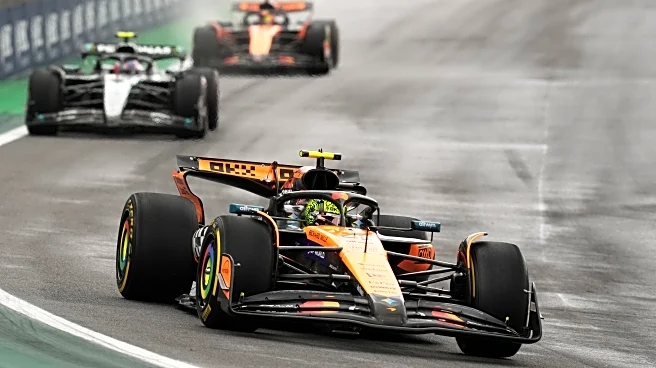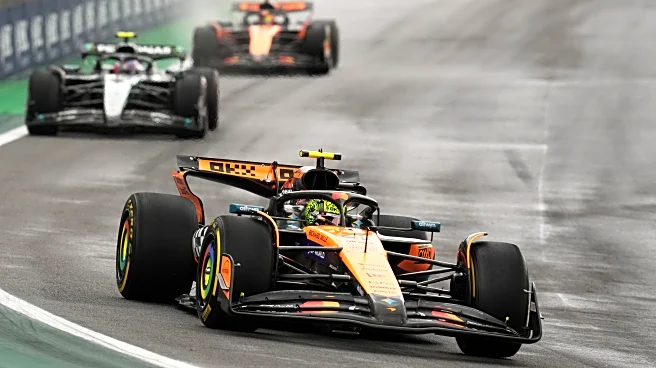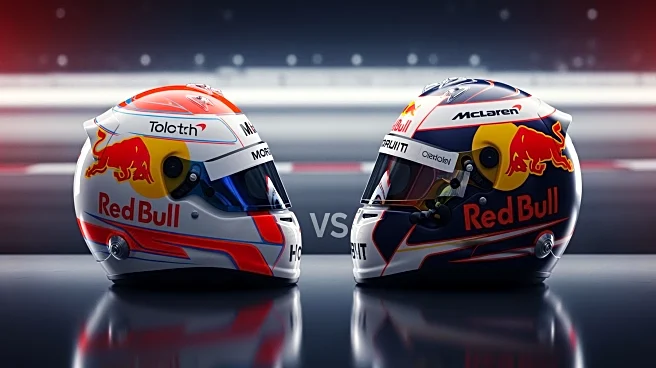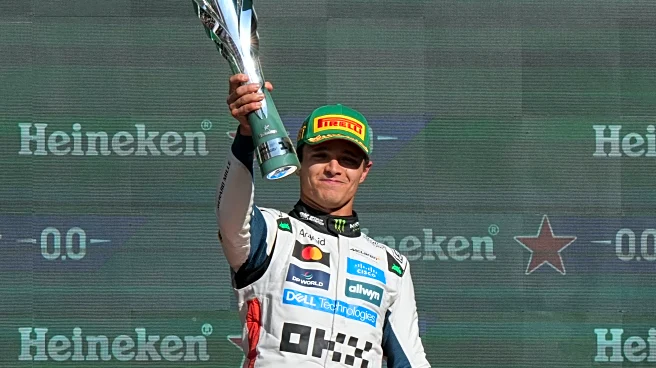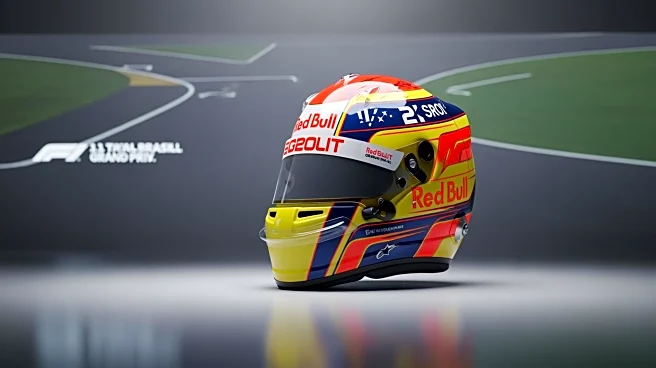What's Happening?
The 2025 São Paulo Grand Prix is underway at the Autódromo José Carlos Pace in Brazil, with McLaren's Lando Norris taking a commanding lead in the World Drivers’ Championship. Norris has been dominant
throughout the weekend, securing P1 in the sprint qualifying shootout, winning the sprint race, and achieving P1 in race qualifying. His performance has given him a nine-point lead over teammate Oscar Piastri, who crashed out of the sprint but qualified P4 for the main race. Meanwhile, Red Bull's Max Verstappen, currently third overall, faced challenges in qualifying, failing to advance out of Q1 for the first time since the 2021 Russian Grand Prix, and will start 16th. The race, featuring a 2.677-mile circuit with 15 turns, consists of 71 laps totaling 190.064 miles.
Why It's Important?
The São Paulo Grand Prix is a critical event in the Formula 1 calendar, impacting the standings in the World Drivers’ Championship. Lando Norris's strong performance could solidify his position as a leading contender for the championship, potentially altering the competitive dynamics within McLaren and the broader F1 landscape. Max Verstappen's struggles highlight the unpredictability of the sport and could affect Red Bull's strategy moving forward. The race also serves as a significant platform for showcasing driver skills and team strategies, influencing sponsorships and fan engagement globally.
What's Next?
As the race progresses, teams will need to adapt their strategies based on real-time developments. McLaren will aim to maintain Norris's lead, while Red Bull will likely focus on maximizing Verstappen's position despite his challenging start. The outcome of the race could have implications for the remaining races in the season, affecting team morale and strategic decisions. Fans and stakeholders will be closely monitoring the performance of key drivers, which could influence future sponsorship deals and team dynamics.
Beyond the Headlines
The São Paulo Grand Prix not only impacts the championship standings but also plays a role in the cultural and economic aspects of Formula 1. The event attracts global attention, boosting tourism and local economies in São Paulo. It also highlights the technological advancements in motorsport, with teams constantly innovating to gain competitive edges. The race underscores the importance of resilience and adaptability in high-pressure environments, offering insights into the broader themes of competition and teamwork.


